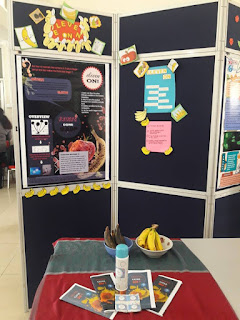E-Portfolio: Microbiology - Week 14

Assalam and hi. So, this week is our last week for this semester. We learned about Microbial Growth, Microbial Metabolism and the Nutritional Requirement of the microbes. This week also, we had our 3 Minute Talk (3MT) session for our Adopt A Microbe programme. Basically, everyone need to talk about what they know or they learn or they understand on their chosen microorganisms, For me, I chose Paenibacillus vortex. P. vortex is actually a very useful bacteria especially for plants. They are a part of rhizosphere community that live with the plant and help fighting the plant pathogens. They have wide range of antimicrobial properties that can use to make antibiotics in order to kill other species of bacteria. So, here is my poster/slide of the talk. At the end of our class, we had a small feast as Dr Wan bought us cakes and beverages. The chocolate cake was so goooooood! We took pictures together with Dr Wan. It was a good ending for this semester. Thank you a...














